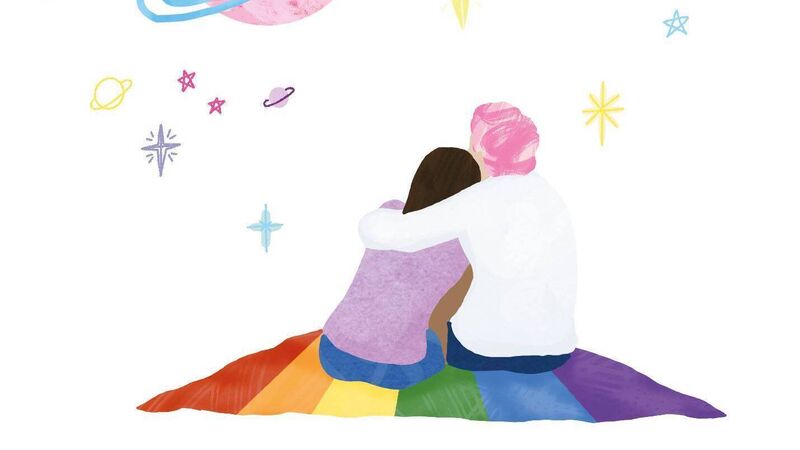'Sex Educated' series: Learning about gender identity

Illustration from Sex Educated. Illustrations by Ciara Coogan
HOW is gender different to sex? Are they not the same thing?
When we think about sex, we are considering the physical, biological, and genetic make-up of a person. This can include what genitals and organs they have, their hormone levels and what chromosomes they have in their DNA.
Gender describes how we feel, our identity, and how we express ourselves, in ways that are either masculine, feminine or anything between and beyond.
The terms gender and sex were often, and sometimes still are, used in place of each other, which has led to a lot of confusion between the two terms.
In Western society, we hear most about two genders – male and female. When a baby is born with male-typical genitals (penis), they are usually assigned the gender male. When a baby is born with female-typical genitals (vulva), they are usually assigned the gender female.
Many people grow up to be OK with the gender they were assigned at birth – they are happy to live and identify as a boy or girl. However, because a baby cannot talk or understand gender, sometimes they may be assigned a gender which they do not identify with later in life.
The decision has been made based on their genitals (i.e. an indicator of their sex), but the meaning of gender and how we experience and understand it extends far beyond simply the bits we have between our legs.
As humans, we are subconsciously thought to apply gender to things that do not have any genitals at all. For example, you might have heard the colour pink is girly. We are much more likely to buy pink cards, balloons, and flowers for the parent(s) of a baby who was born with a vulva, but it might be seen as odd to buy pink gifts for a baby who was born with a penis.

Somewhere along the way, we, as a society, decided pink was more suited to people who are born with vulvas. It is just a colour. It has no hormones, chromosomes, no penises or vaginas! It simply exists and has existed long before we evolved as humans and began to assign genders to different colours.
In some cultures, pink is and was considered a masculine colour, as it was a close relative to red, which represented bloodshed and battle. Therefore, the way we understand gender can differ greatly, depending on where we live, and at what point in time we are alive.
The notion we can place almost everything in the world into either the masculine box or the feminine box and keep it there (this is often referred to as the gender binary) is impossible and unnecessary. Of course, there is nothing wrong whatsoever with buying pink gifts for a new-born baby girl. This is simply an example of how we automatically assign gender to colour.
We assign gender to countless things such as toys, clothing, behaviour, hairstyles, hobbies and careers. Gender assignment is everywhere.
Humans love to label things as we feel it helps us understand the world. Sometimes, these labels are unnecessary, sometimes even harmful. It is unrealistic and unfair to expect people to look and act a certain way based almost entirely on what genitals they were born with.
Even though there are lots of gender identities and labels out there, it does not mean that you have to pick one for yourself or assign labels to others. Some people strongly identify with labels, whereas some people do not. What is more important is to try to be open-minded and accept that there are different gender identities that people gravitate towards.
Some gender identities and experiences we may understand and some of them we may not, but a lack of understanding around something does not mean it is not worthy of respect and acceptance. For instance, you might not have an understanding of astronomy, but you most likely accept there are multiple planets, moons, stars, galaxies, and comets in space.
More about the guide ‘Sex Educated’:
‘Sex Educated’ is a one-stop-shop guide for parents and teenagers to all things sex, relationships, bodies, puberty, porn, gender, sexuality, anatomy, and so much more.
The book is a collaboration between Sexual Health West and sex & intimacy specialist Grace Alice Ó Sé (graduate of NUI Galway and UCC), illustrated by Ciara Coogan. It comprises of hundreds of questions that have been put to Grace and her fellow sex educators by young people in schools all over the West of Ireland.
It is written in an accessible, comprehensive and sex positive Q&A style, allowing readers to dip in and out of the content as they need it. The information above was taken from a chapter of Sex Educated, which can be bought from sexualhealthwest.ie.
More about the author
Grace Alice is a sex educator and intimacy coach from Kerry. She delivers workshops in schools and universities, as well as working privately with adults and couples. You can learn more about her work at gracealice.com.
Tomorrow: Consent







 App?
App?





